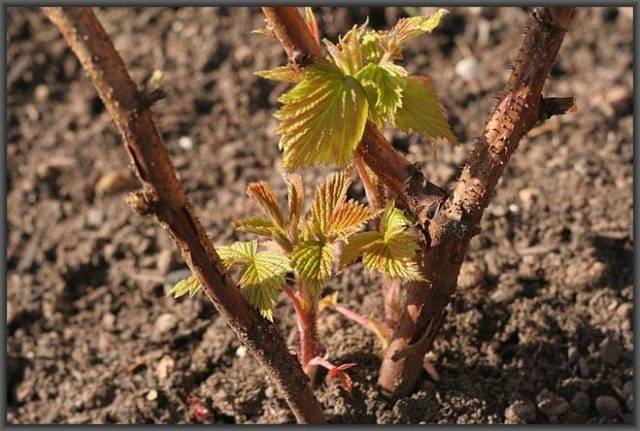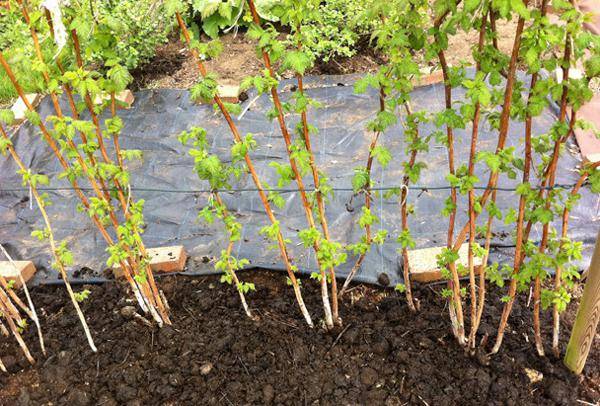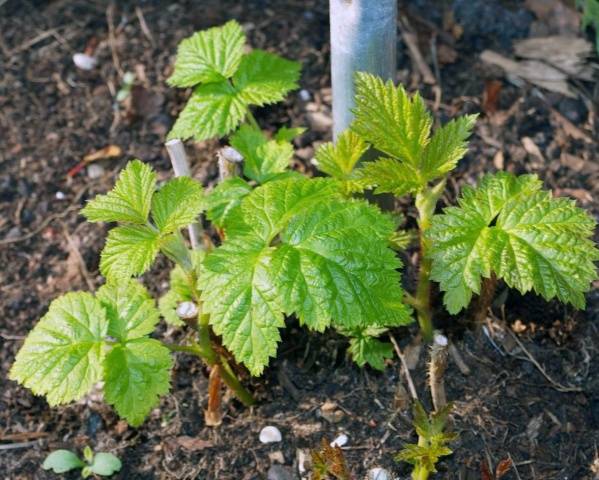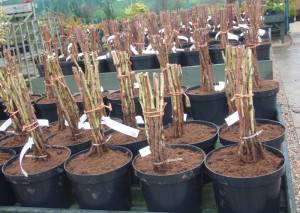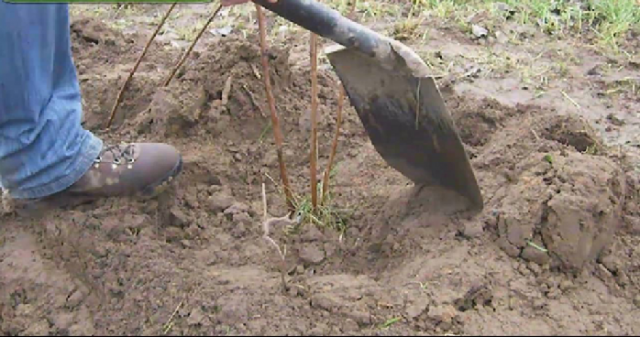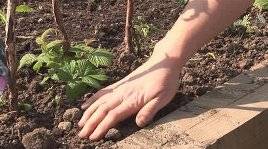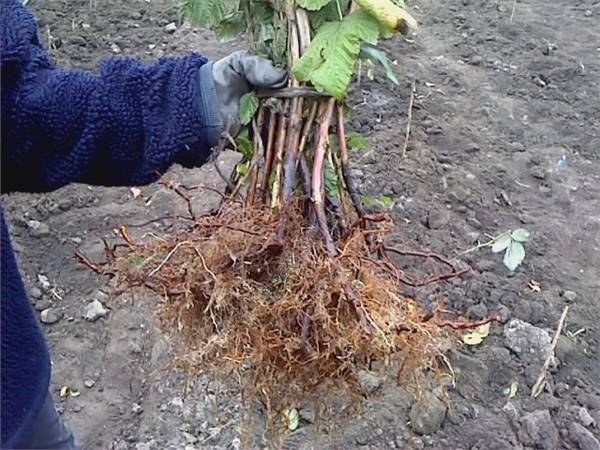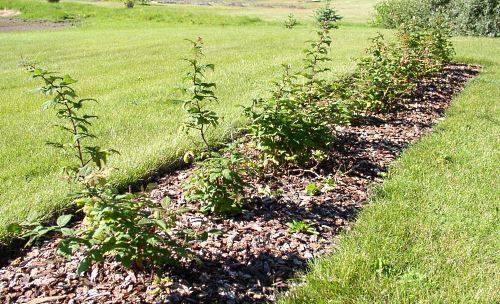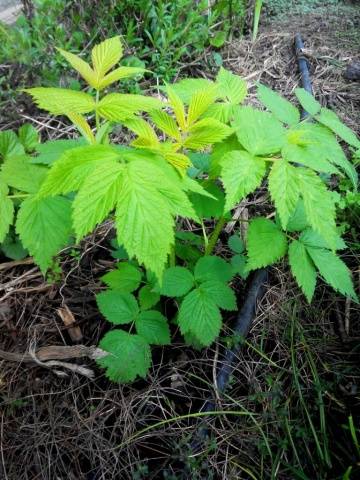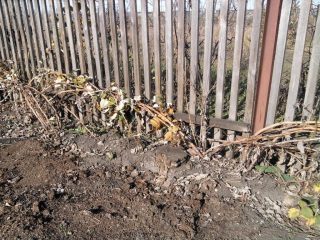Content
In the spring, all summer residents and gardeners are puzzled by the improvement of their land. So, with the arrival of warmer weather, young trees and shrubs, in particular raspberries, can be planted. Planting raspberries in the spring, as a rule, does not cause any particular difficulties, however, failure to comply with certain rules can lead to a subsequent decrease in the yield of this crop. Information on when and how to properly plant raspberries in the spring can be found in the article below.
Boarding time
It is necessary to plant raspberries in early spring, before the buds bloom on the trees. Depending on weather conditions in the central regions of Russia, this can be done between April and May. It is worth noting that often novice gardeners do not know exactly when to plant raspberries in the spring, delaying this moment until the beginning of summer. In this case, young plants especially need increased soil moisture, and hot weather conditions can destroy planting material. That is why it is necessary to think about choosing a location, preparing the soil and preparing planting material immediately after the snow has melted.
Best place to grow
Raspberries, like many other plants, are very demanding of sunlight.With a lack of light, raspberry shoots become very elongated and become less protected from pests and severe winter frosts. The yield of such plantings is low.
When planting, it is recommended to place rows of plants from south to north.
When choosing a place to grow raspberries, it is also worth considering the movement of winds, since drafts negatively affect the volume of fruiting and the growth of the crop as a whole. It is also not recommended to plant the crop in lowlands and wetlands. Increased soil moisture slows down the growth of raspberries and makes the berries small and lacking the characteristic taste qualities of the variety.
Soil preparation
For growing raspberries, soil is of particular importance. Its acidity should be low or neutral. The plant also prefers well-drained soils: light loams, sandstones and sandy loams. High soil fertility allows you to increase crop yields.
Experienced farmers distinguish good and bad predecessors for raspberries. Thus, it is not recommended to plant plants in the place where tomatoes or potatoes previously grew.
You should prepare a plot of soil for spring planting of raspberries in the fall. To do this, it is necessary to remove all remnants of previous vegetation and foliage, since they can hide harmful bacteria of various diseases and pest larvae. Organic and complex mineral fertilizers should be added to the soil, after which the soil should be dug up.In order to speed up the thawing of snow and warming up of the soil in the spring, you can cover the soil with black polyethylene and cover the area with mulch.
If you follow all the rules for choosing a place and preparing the soil, raspberries planted in spring will quickly take root and produce the first harvest of berries in the same season.
Buying a seedling
Having chosen a place for cultivation and prepared fertile soil, it is worth thinking about the choice of planting material. So, when purchasing seedlings at a market or fair, you should pay attention to the thickness of the shoots. It should be medium, not thick (no more than 1 cm). At the same time, seedlings with thin stems take root best in new conditions. The raspberry root should be well developed and fibrous. White shoots from the root system are normal. There should be at least 3 buds at the base of the raspberry seedling.
It is better to purchase seedlings with a closed root system, otherwise the roots of the plant should be tightly wrapped in damp cloth. During transportation, the roots of the seedling should be additionally wrapped in a plastic bag.
Planting methods
The answer to the question of how to properly plant raspberries in the spring is not clear-cut, since there are two different ways of planting seedlings. So, you can plant raspberries in trenches or holes (bush planting). These methods have different technologies and consist of specific sequences of actions. The results of such plantings are also different, so the choice of how to plant raspberries in the spring depends only on the gardener.
Bush method
The method in which raspberry seedlings are planted in holes is called bushing. This is what gardeners use most often.Its advantage is that autumn preparation of the land is not mandatory. Fertilizers can be added to the soil directly during planting of seedlings in early spring.
To plant raspberry seedlings using the bush method, you should follow the following step-by-step instructions:
- To plant raspberries, you need to make holes at least 50 cm deep and 50 to 60 cm wide.
- Compost should be placed in a volume of 3-4 kg at the bottom of the pit. In addition to organic matter, it is recommended to add a complex mineral fertilizer containing potassium, nitrogen and phosphorus to the soil at the root. When applying, fertilizers must be mixed with the soil.
- The seedling, placed in the hole, must be centered. It is not worth deepening the plant, however, and shallow planting of seedlings is undesirable, since in this case the raspberry roots dry out. While filling the hole with soil, slightly lift the seedling several times so that the soil fills the space between the roots.
- After filling the hole, the soil must be slightly compacted and a hole must be made to collect water.
- Raspberries should be watered generously at the root, after which the soil should be mulched with straw, peat or steamed sawdust.
- Seedlings must be pruned so that cuttings 15-20 cm high remain above the ground.
At planting raspberries using the bush method, the root collar of the seedling should be at ground level. You can see the process of planting raspberry seedlings using the bush method and hear comments from a specialist in the video:
When planting raspberry seedlings in a hole, it is easy to carry out subsequent watering, processing of the plant and harvesting. It is worth noting that you will be able to enjoy delicious raspberries in the same year that the planting took place.The abundance and taste of raspberries largely depend on nutritional value, soil moisture and climatic conditions.
Planting raspberries in trenches
An alternative to the bush method is to plant raspberries in trenches. This method is less popular among owners of private farmsteads, but it is indispensable for industrial cultivation of berries. By planting raspberries in trenches, you can increase the yield of the crop several times, however, such planting is much more hassle than with the bush method.
Step-by-step instructions on how to plant raspberries in trenches are given below:
- The selected area of soil should be cleared of debris, grass, and leaves, and then trenches of the required length should be dug. The trench width should be approximately 50-60 cm, depth 40-45 cm. Between two adjacent trenches, row spacing should be maintained at least 120 cm wide.
- If raspberries are planted in areas with high humidity levels, then it is necessary to provide drainage. So, broken bricks, expanded clay, and thick tree branches can be placed at the bottom of the trench. On dry soils such a layer need not be laid.
- At the bottom of the trench or on top of the drainage layer, it is necessary to place a nutrient layer at least 10 cm thick. To do this, you can use peat, rotted manure, mown grass, leaves and other components, which can later become nutritious organic fertilizer. During the process of decay, this organic matter will nourish the raspberry plant with useful microelements and warm up the root system of the plants. Such a nutrient layer “works” for 5 years, after which the rotting process will be completed. At this time, the raspberry tree can be transplanted to a new place of growth.
- A layer of fertile soil (peat or garden soil) should be poured on top of the nutrient layer with organic matter. The thickness of this layer should be at least 10 cm.
- Seedlings in trenches should be placed at a distance of 40 cm from each other. The roots of the plants must be carefully straightened, watered and buried with soil. Compact the top layer of soil. It is worth noting that it is more convenient to plant raspberries together, when one person holds the plant vertically, and the second performs planting manipulations.
- After planting, the seedlings are pruned, leaving 15-20 cm of cuttings above ground level.
- The soil under trimmed raspberry seedlings should be mulched.
Using this guide for planting raspberry seedlings in a trench, you can eventually get a high-yielding raspberry plantation. Thus, the growth of shrubs should occur along a given trajectory quite quickly. If growth does not occur on its own, then you can force the raspberries to sprout. To do this, the bush is dug up on one side, disturbing its peace. An example of how to plant raspberries in trenches is shown in the video:
Conclusion
Thus, each gardener has the right to independently choose the method of growing raspberries, but it is worth remembering that planting seedlings in a trench will ensure a high level of productivity and allow the raspberries to independently reproduce in a given direction, forming a neat ridge. This method has proven itself well when grown in regions with difficult climatic conditions, since it allows the roots of plants to be warmed.In general, when growing raspberries, you should not forget about regular fertilizing and abundant watering, because only in favorable conditions is the crop ready to please the gardener with an abundant, tasty harvest of healthy berries.
